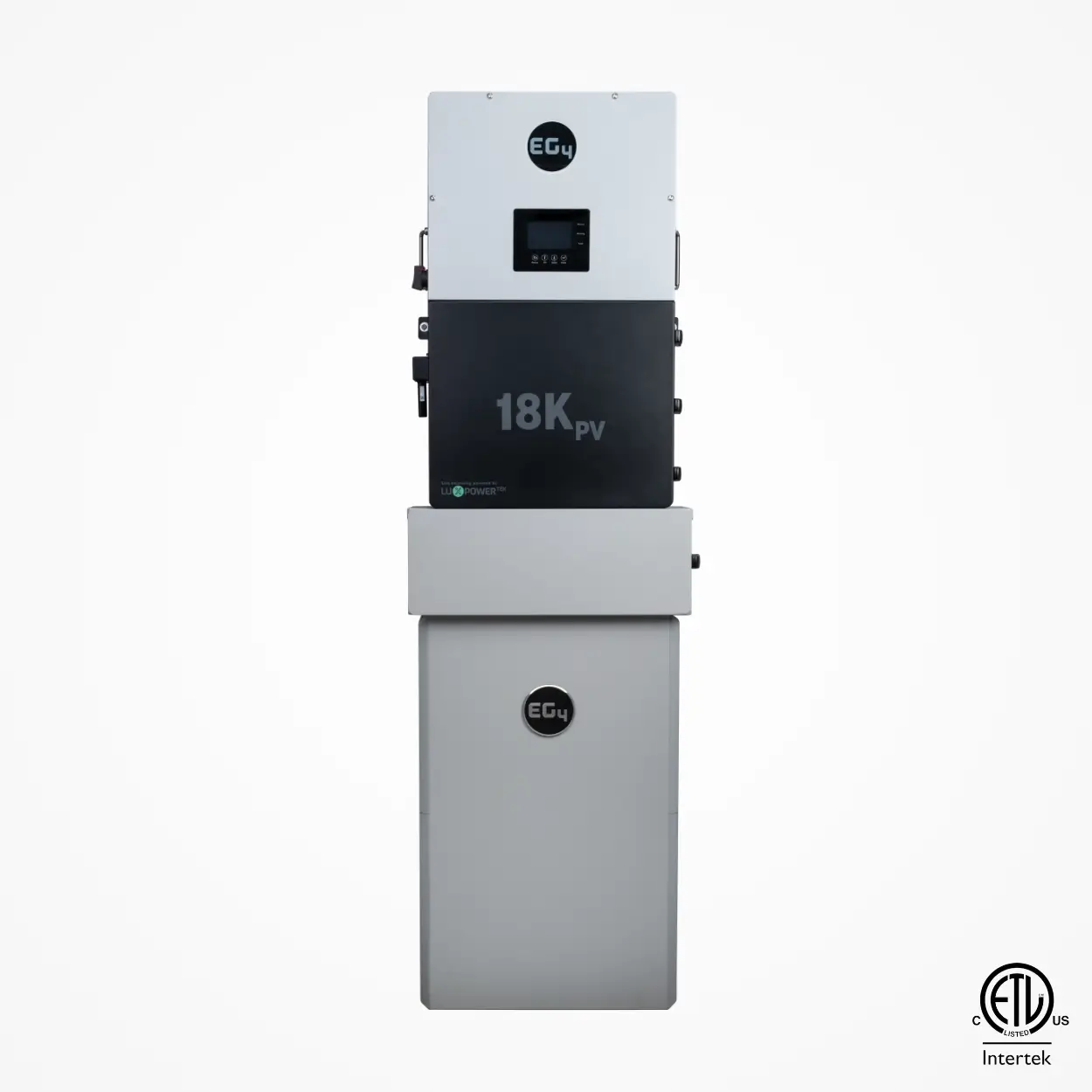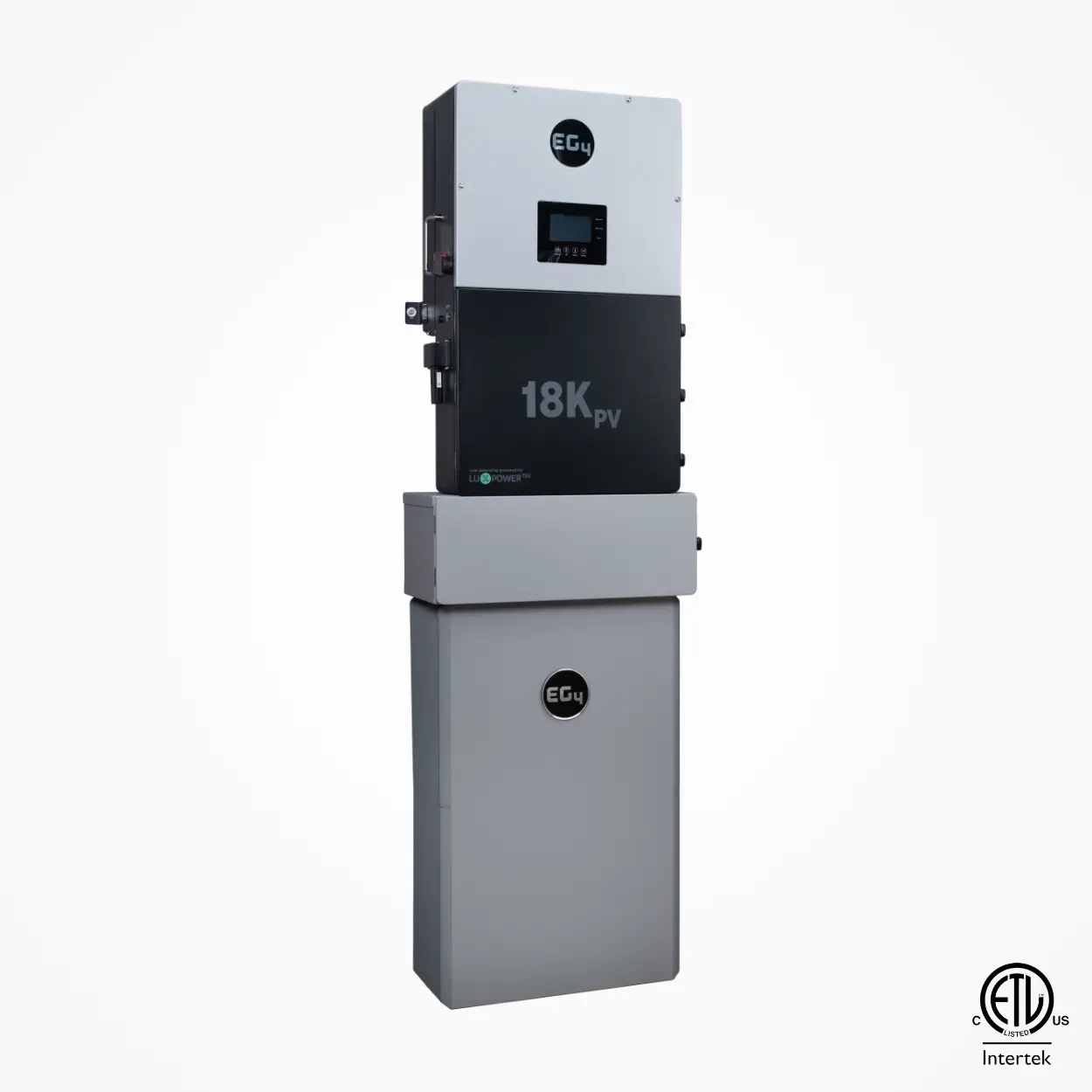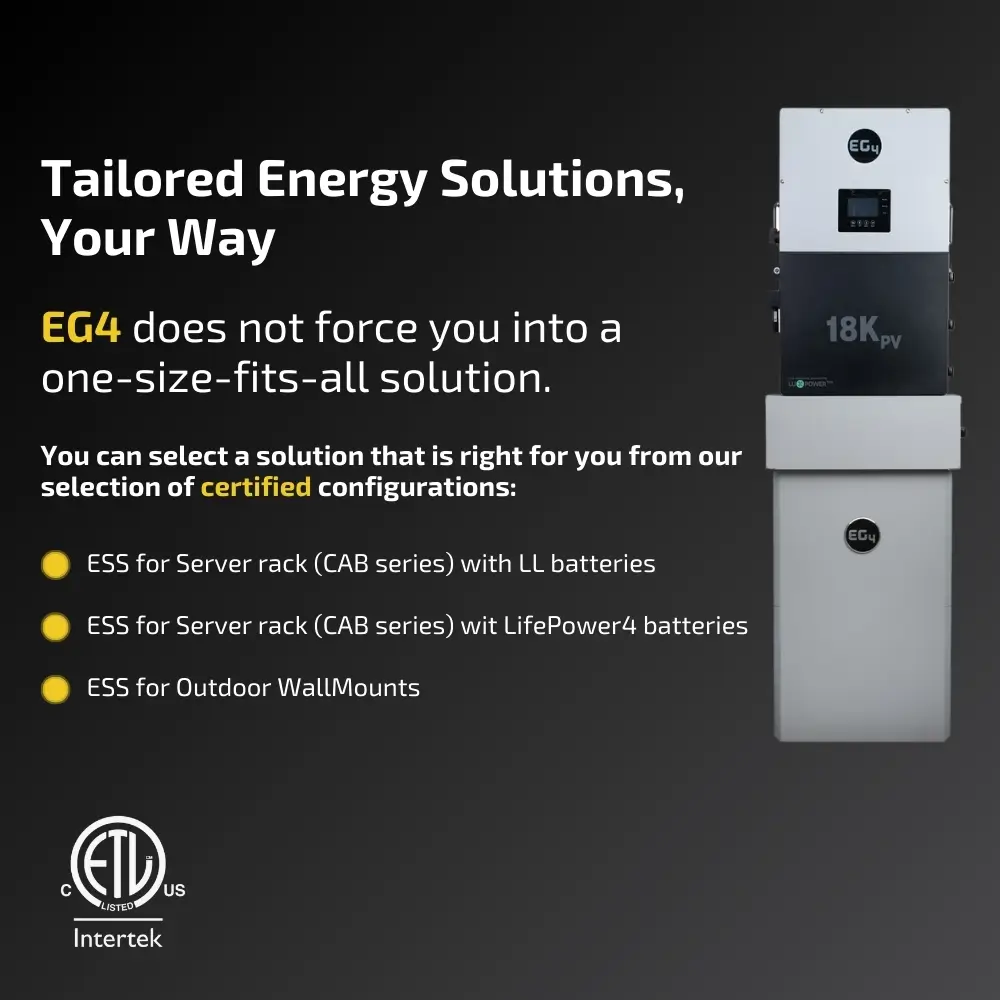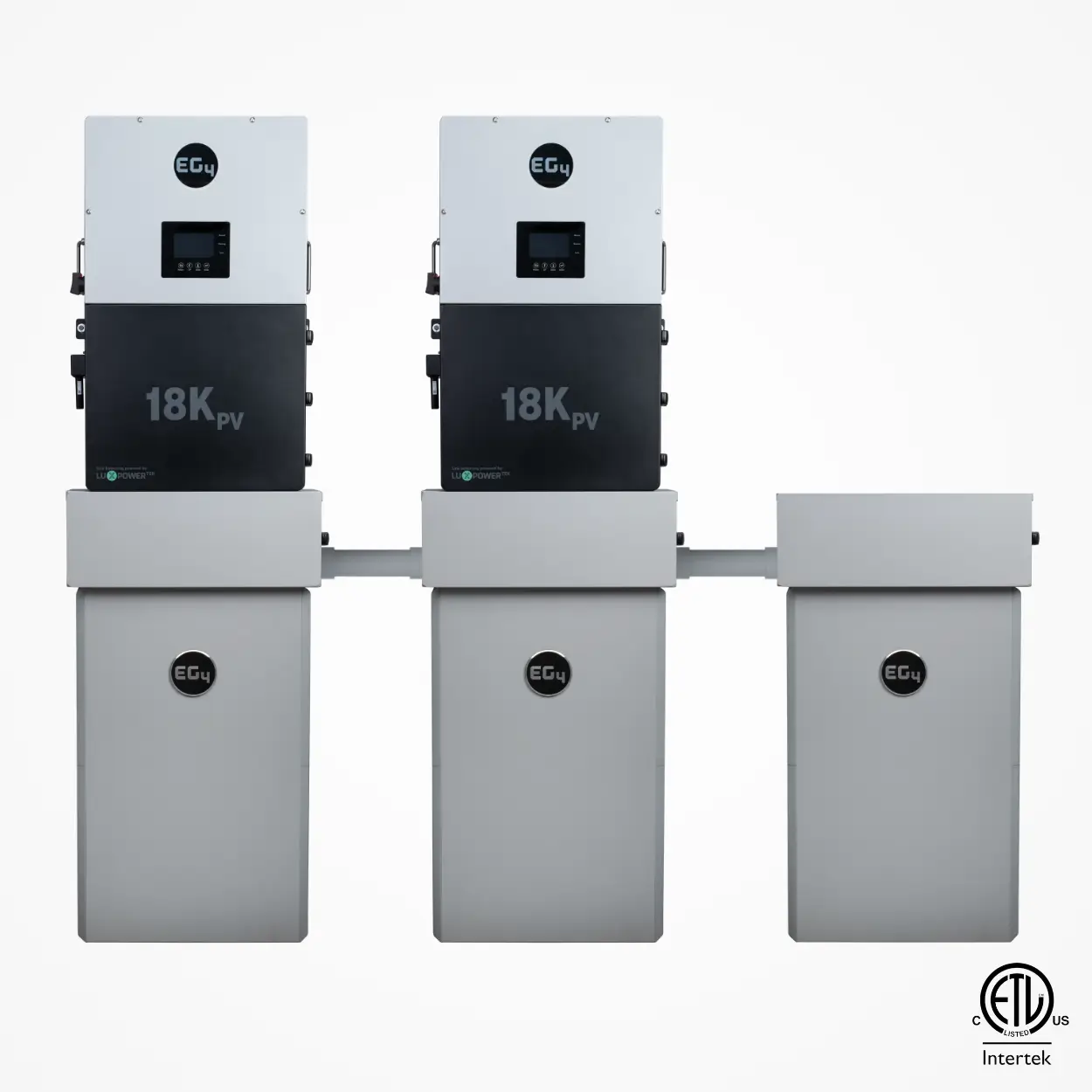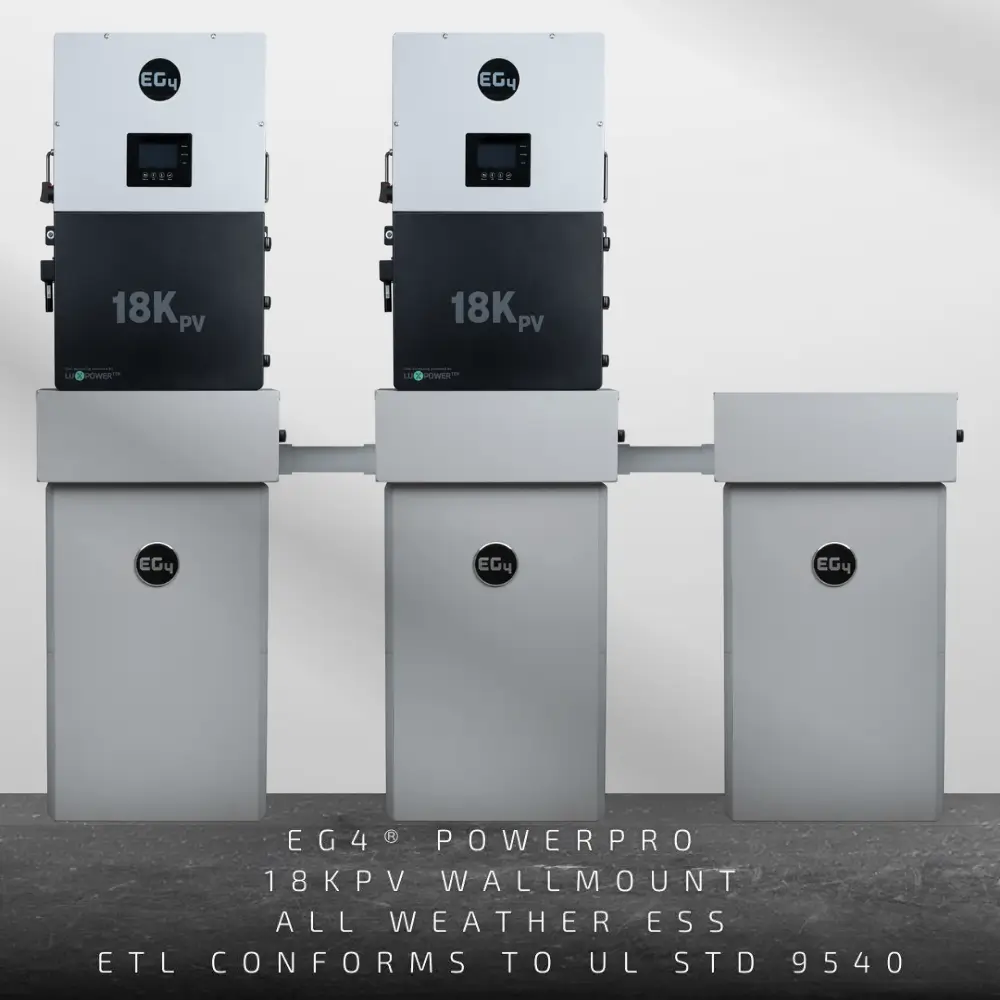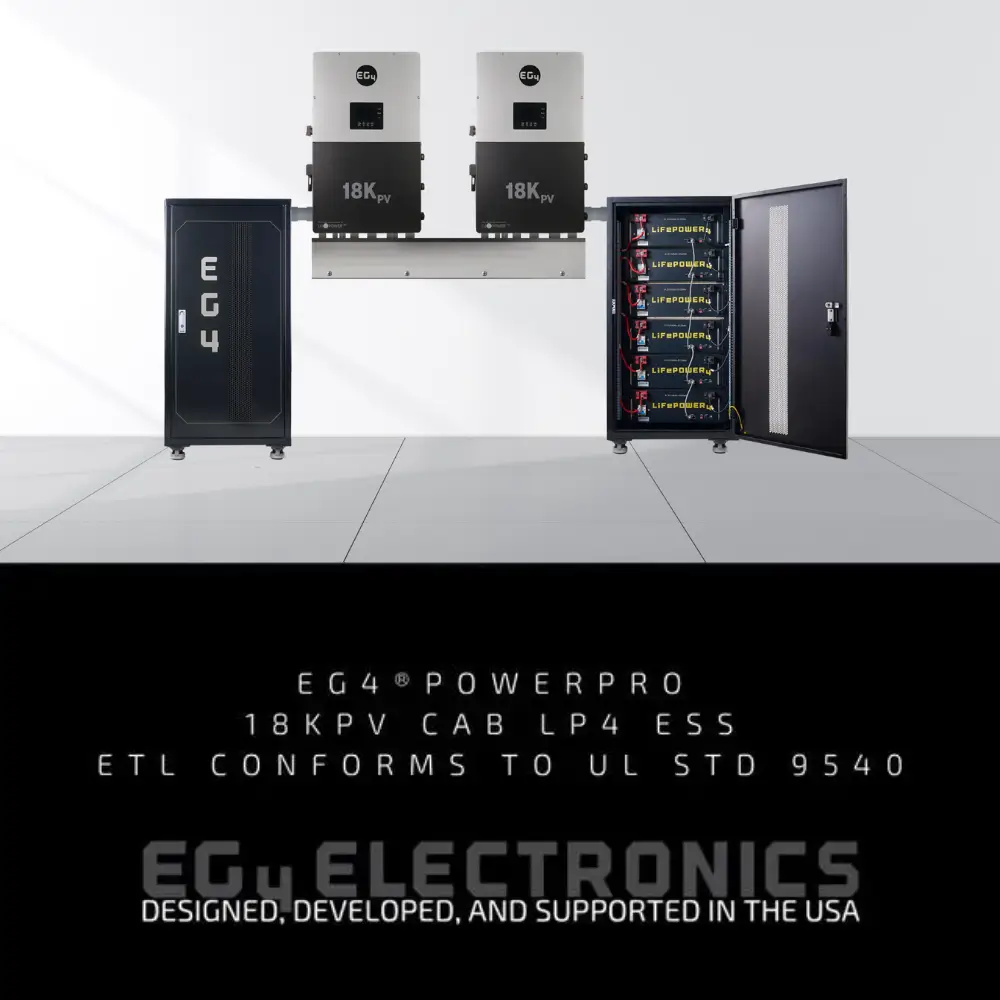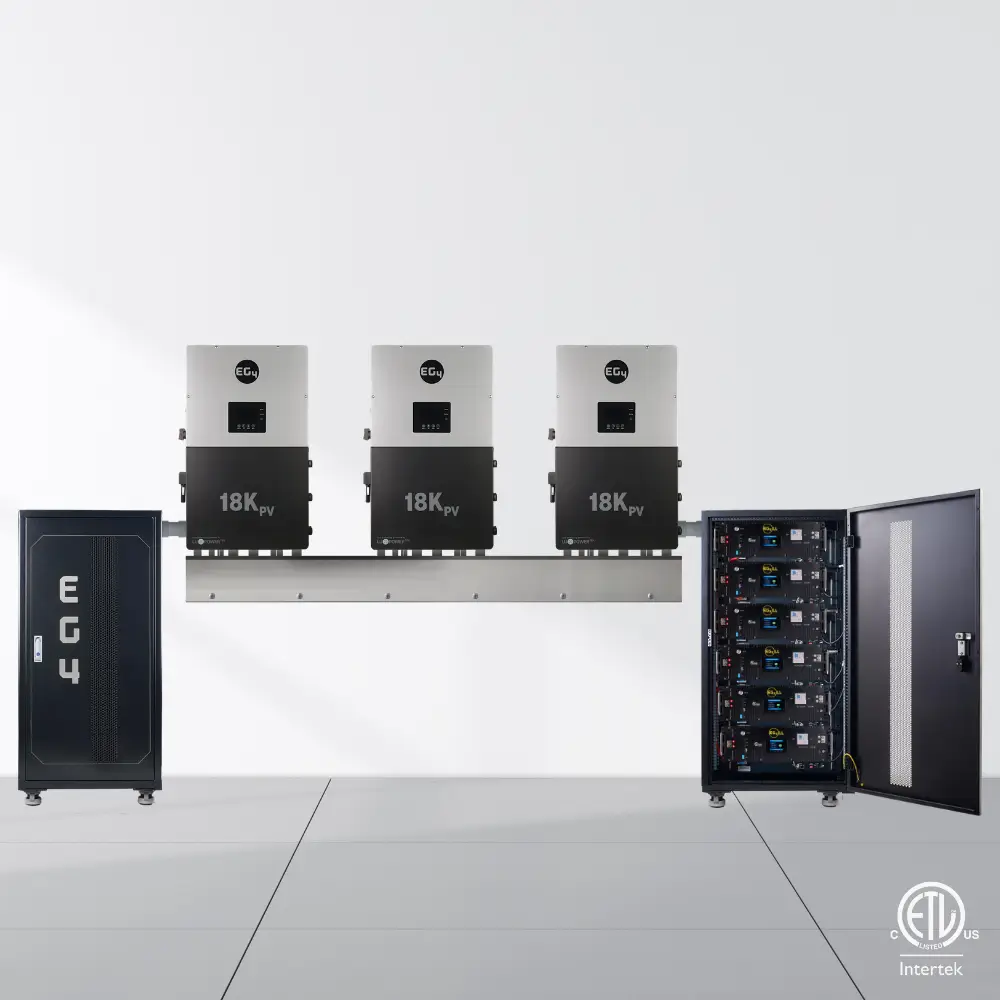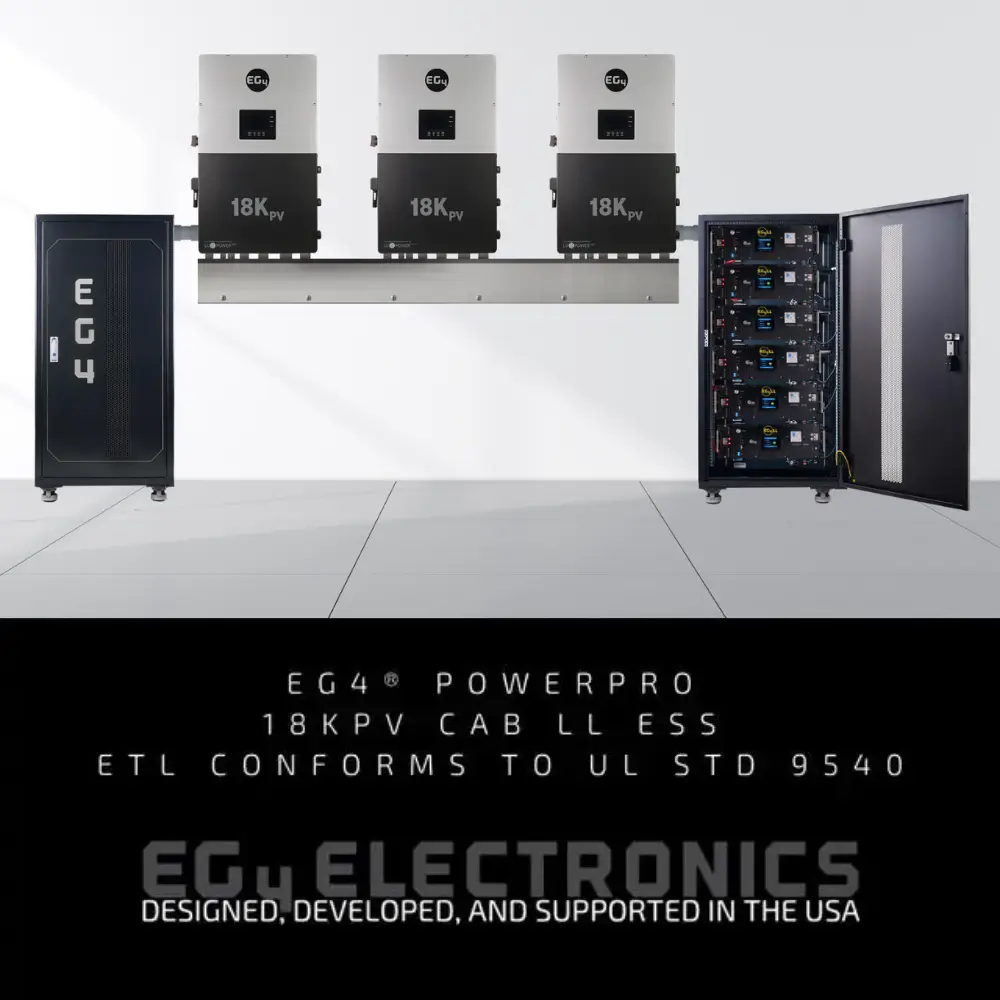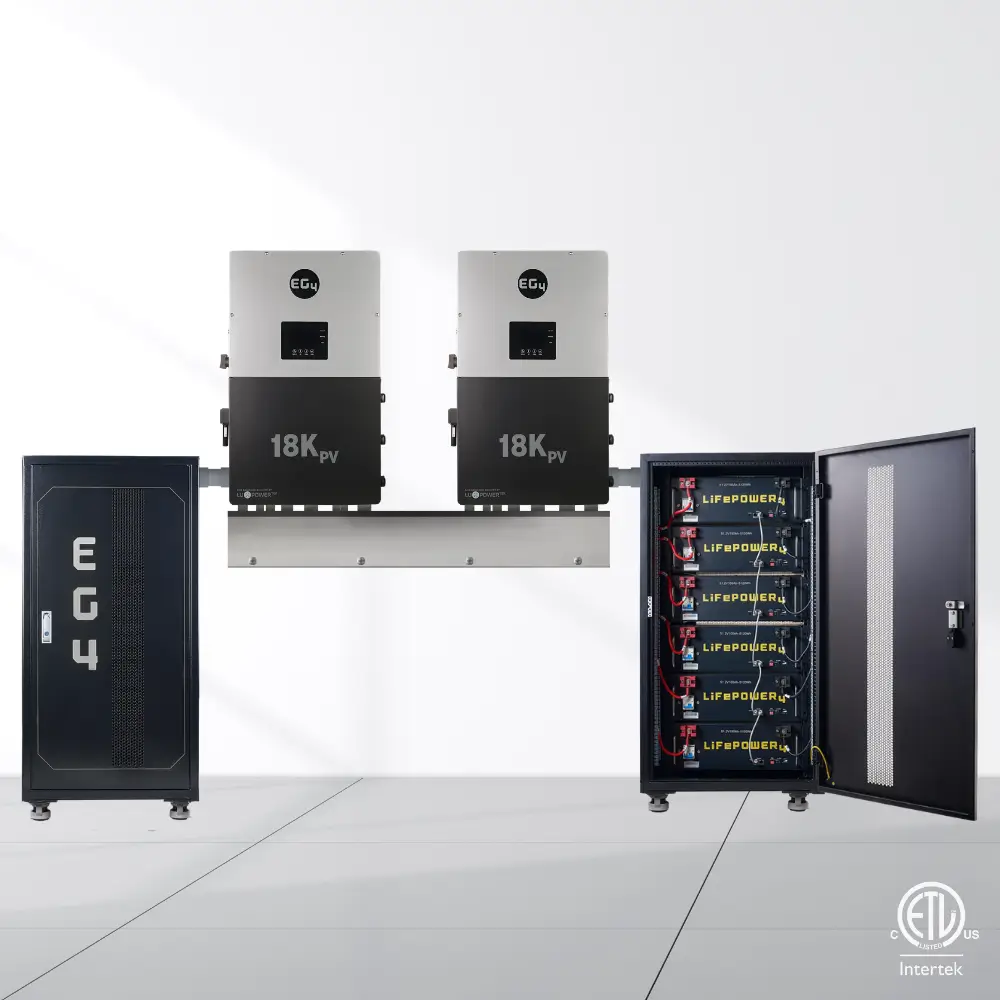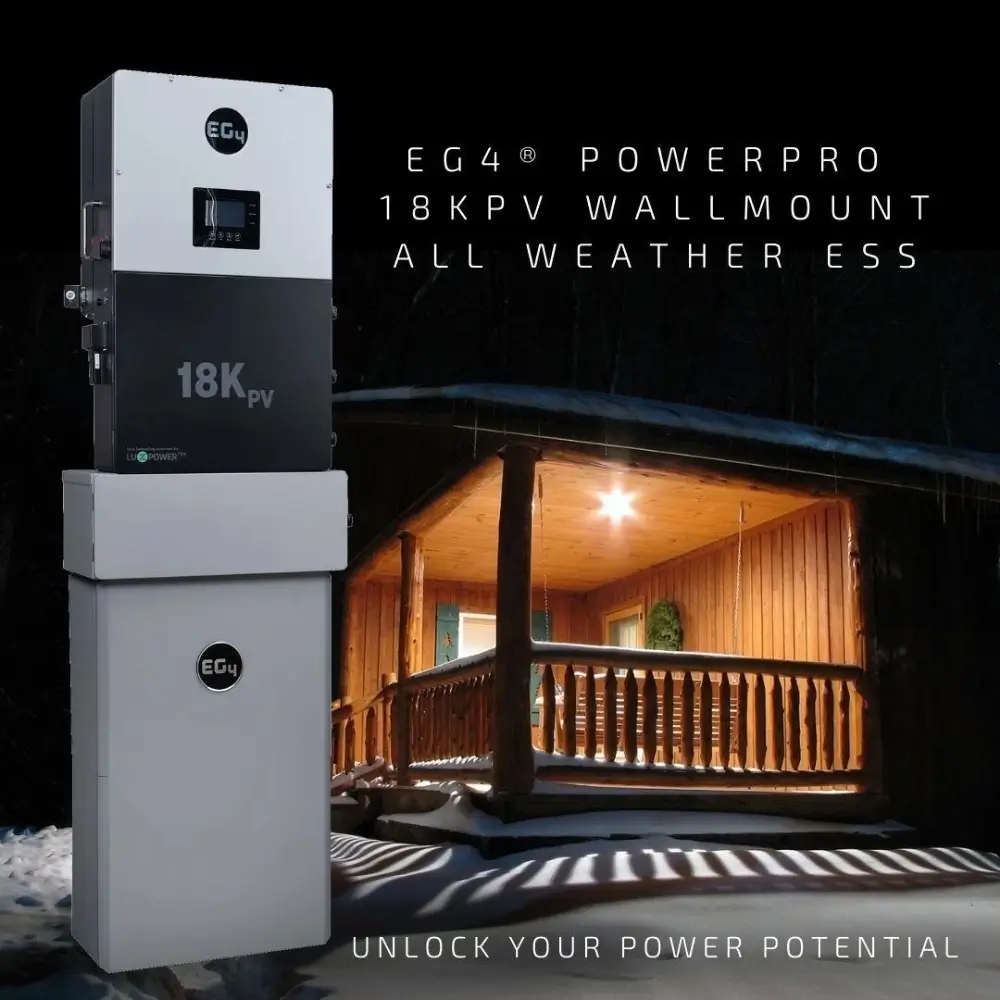EG4® PowerPro ESS
UL 9540 certified
EG4’s versatile Energy Storage Systems (ESS) store energy from renewable sources for times of low availability, power loads during grid outages, and shift grid usage to off-peak hours (or peak shave). Additionally, they contribute to grid stability by smoothing out demand, reducing peak loads that strain the grid. Key components of an ESS include batteries, a Hybrid inverter, a solar charge controller, and solar panels, alongside Balance of System components like wires and fuses.
You can select a solution that is right for you from our selection of certified configurations:
- EG4® POWERPRO 18KPV WALLMOUNT ALL WEATHER ESS
- EG4® POWERPRO 18KPV CAB LL ESS
- EG4® POWERPRO 18KPV CAB LIFEPOWER4 ESS
Prioritizing Safety:
All EG4 energy storage systems are UL 9540 certified, which confirms that the components have been tested by an independent lab to ensure they operate safely together. The UL 9540 certification ensures that each ESS meets stringent safety standards by testing batteries and inverters as a pair with specific configurations. Opting for a UL 9540 system provides peace of mind even if they are not mandated in your jurisdiction.
Flexibility Meets Integration:
EG4 offers a diverse range of certified configurations, embracing customization to match your unique energy needs and tailor your energy solution to align perfectly with your requirements.
Seamless Integration:
EG4’s ESS solutions integrate smoothly with your existing energy systems. They are compatible with solar microinverters, string inverters, grid tie systems, and generator systems, allowing you to enhance your current setup without the need for a complete overhaul.
Add Storage to Your System:
EG4’s ESS adds the benefits of storage to your existing system, providing backup power, energy independence, and reliability without the need for reconfiguration.
EG4® PowerPro 18kPV WallMount All Weather ESS
- MIN CONFIGURATION: 1 EG4 18kPV Hybrid Inverter and 1 PowerPro WallPower All Weather 280Ah Battery
- MAX CONFIGURATION: 3 EG4 18kPV Hybrid Inverters and 6 PowerPro WallPower All Weather 280Ah Batteries
EG4® PowerPro 18kPV CAB LifePower4 ESS
- MIN CONFIGURATION: 1 EG4 18kPV Hybrid Inverter, 1 cabinet, and 3 EG4 LifePower4 batteries
- MAX CONFIGURATION: 2 EG4 18kPV Hybrid Inverters, 2 cabinets, and 12 EG4 LifePower4 batteries
EG4® PowerPro 18kPV CAB LL ESS
- MIN CONFIGURATION: 1 EG4 18kPV Hybrid Inverter, 1 cabinet, and 3 EG4 LL batteries
- MAX CONFIGURATION: 3 EG4 18kPV Hybrid Inverters, 2 cabinets, and 12 EG4 LL batteries
Videos
Playlist

4:25

4:45

7:00

1:19

4:22

3:58

6:23

1:56

2:16

1:18

1:52

5:42

3:42

1:27

3:22

3:35

4:11

6:25

2:18

2:05

4:31
FAQs
An Energy Storage System (ESS) is a collection of batteries, inverter(s) and other components that allow the storage of energy for later use. The term is most often used in conjunction with on-grid systems with batteries but could also be applied to off-grid systems.
Many jurisdictions require UL9540. To get this certification, the battery and inverter must pass stringent safety tests as a pair with specific configurations. An EG4 ESS is one that has been independently certified to pass these requirements using batteries and hybrid inverters. Even if your jurisdiction does not require a UL9540, choosing a UL9540 system gives you the peace of mind that the components have been tested by an independent lab to assure they work safely together.
Each system will be different, but the primary components of an ESS will include batteries, a hybrid inverter, a solar charge controller (usually bundled in the inverter) and solar panels. However, there will be many other smaller components (known as the balance of system) that are required to set up a system properly and safely. This can include things like wires, conduit, solar panel mounting hardware, switches, and fuses.
An ESS can store energy from many different sources. The most common source of energy stored by an ESS is solar, but any form of energy could be used in the system including renewable energy (solar power, wind power, hydro power), generator, grid, etc. An EG4 ESS is designed with a focus on energy from solar and the grid, as well as AC coupling (generators).
There are several reasons to install an Energy Storage System (ESS). One reason is to store energy generated from solar or other renewable sources for times when the primary source is unavailable. Another benefit is to power loads during grid outages, ensuring continuity of electricity supply. Additionally, an ESS enables the shifting of grid usage to off-peak hours, a practice known as peak shaving, which helps balance demand and alleviate strain on the grid during peak periods. Moreover, by facilitating the redistribution of grid usage to off-peak hours, the system contributes to grid stability by smoothing out demand fluctuations and reducing the occurrence of peak loads that the grid may struggle to accommodate.
Yes, depending on how the system is configured. An ESS can be optimized for load shifting, grid failures or a balance of both.
Yes. An ESS uses a hybrid inverter that is grid interactive, so it can be programmed to sell back to the grid at any time. Depending on the net metering program available for your utility, this can make a lot of sense financially.
Yes, you can add your existing system to certified EG4 ESS and classify it as EG4 ESS system. Please contact our technical support for more information.
EG4 system is designed for scalability. You can always add more batteries and inverters in the near future as your energy needs grows and classify your system as certified.

